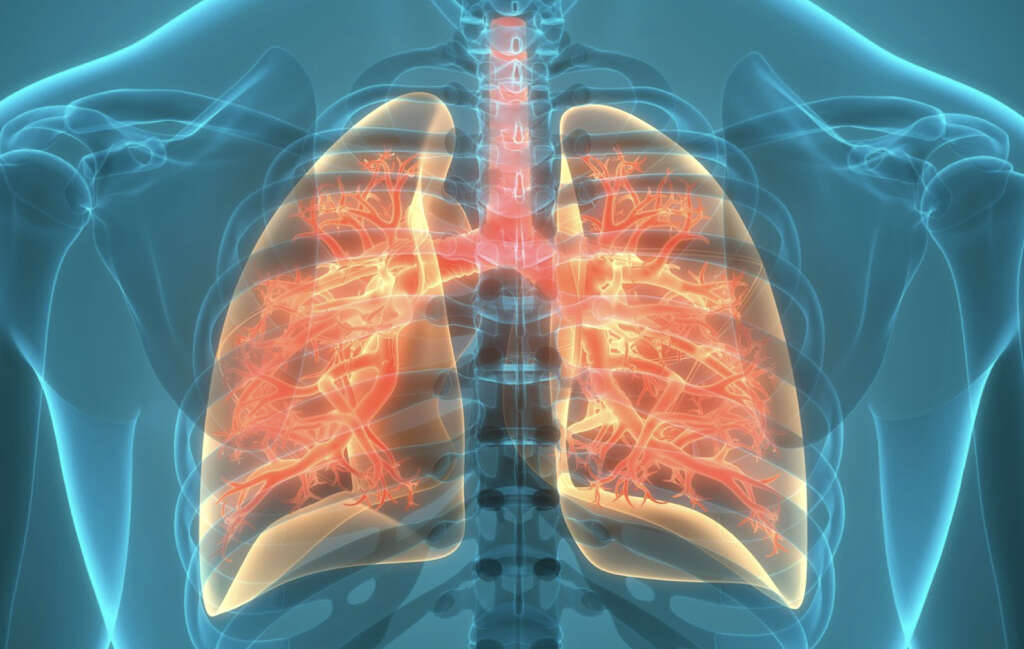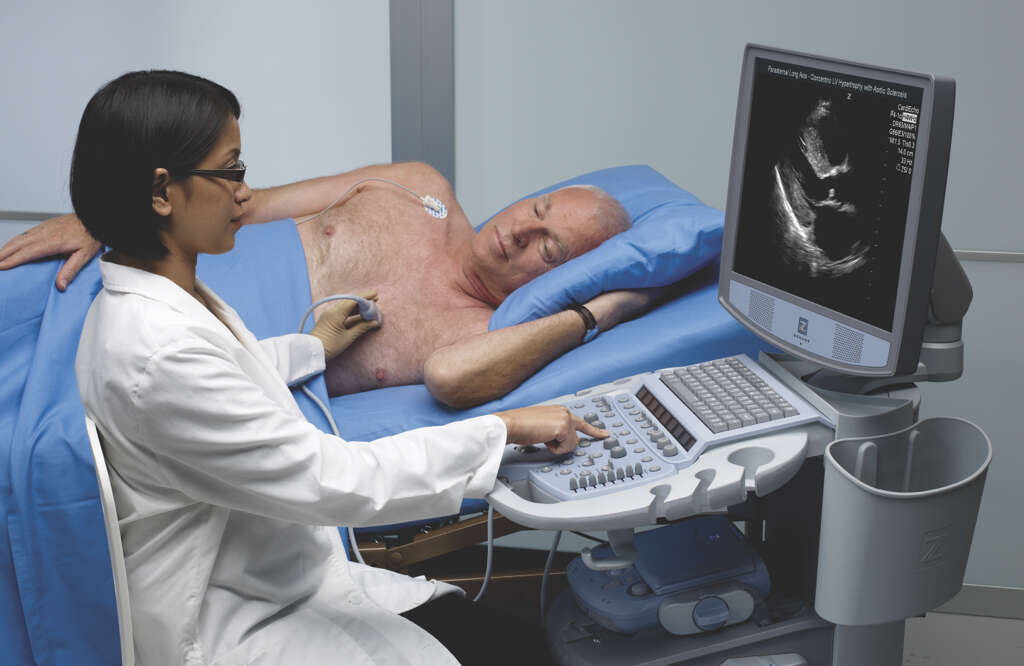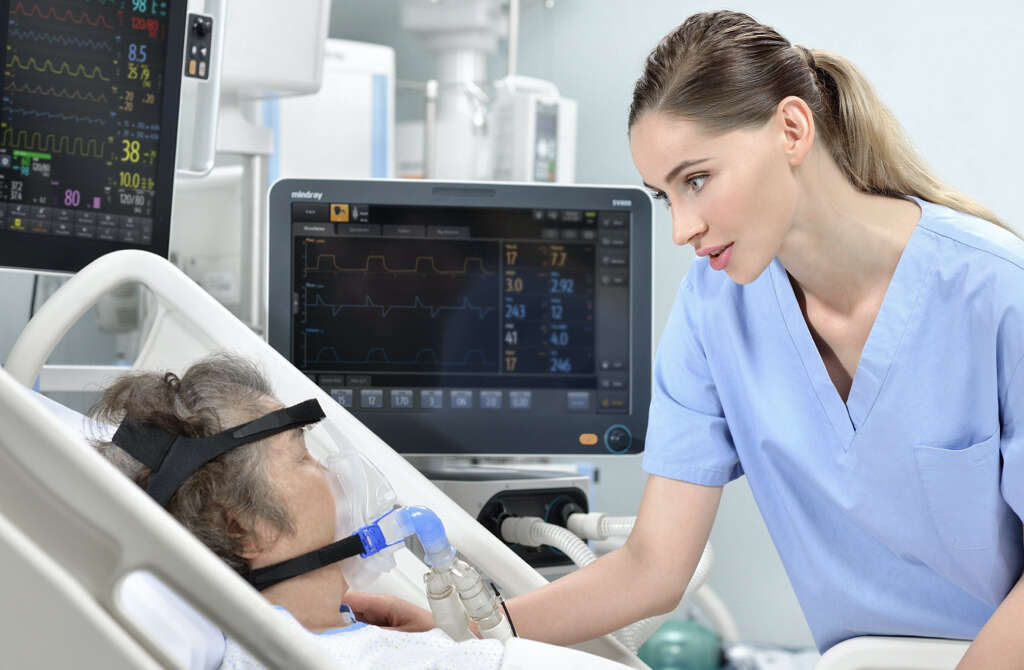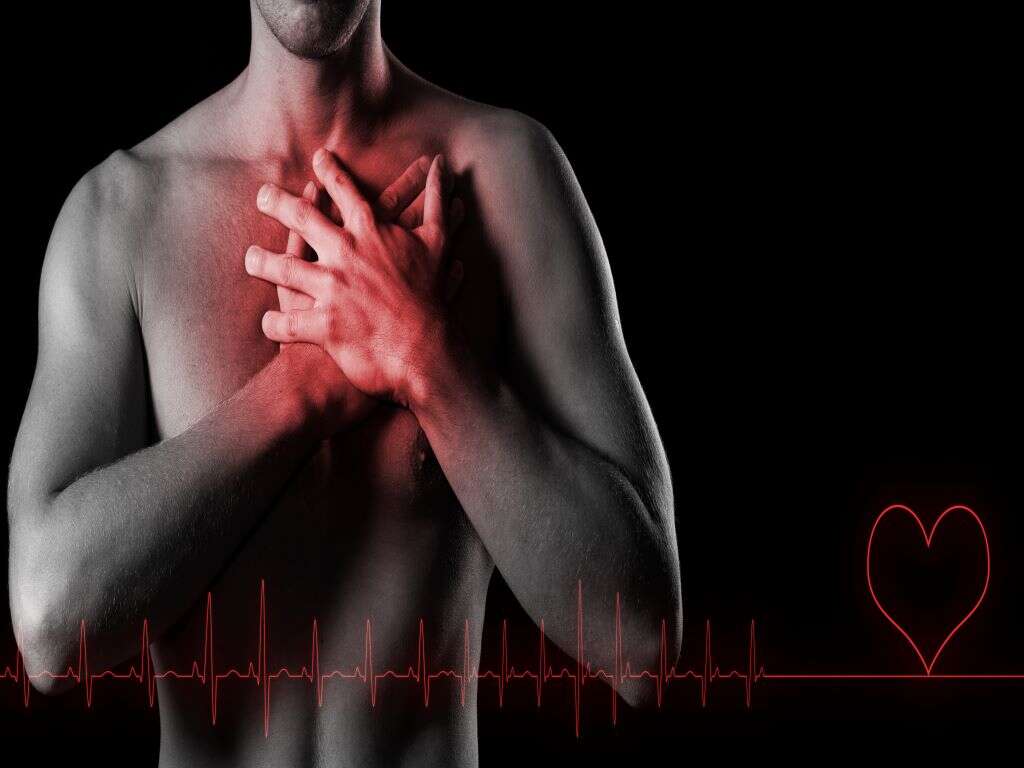What Is Cor Pulmonale?
 Article Sources
Article Sources
- 1. Biswas, Abhishek. Preventing the development of acute cor pulmonale in patients with acute respiratory distress syndrome: the first step. Annals of Translational Medicine vol. 4, 7 (2016). doi: 10.21037/atm.2016.03.18
- 2. Howlett, Jonathan G. Cor Pulmonale. Merck Manuals Professional Edition (2020). https://www.merckmanuals.com/professional/cardiovascular-disorders/heart-failure/cor-pulmonale
- 3. Leong, Derek et al. Cor Pulmonale. MedScape (2019). https://emedicine.medscape.com/article/154062-overview
Cor pulmonale is an enlargement of the heart’s right ventricle due to abnormally high blood pressure in the lungs. Chronic obstructive pulmonary disease is the most common underlying condition, but other types of lung disease also contribute to the development of this structural change in cardiac muscle.3Leong, Derek et al. Cor Pulmonale. MedScape (2019). https://emedicine.medscape.com/article/154062-overview
Chronic cor pulmonale has subtle symptoms that can go unnoticed for years, especially in patients accustomed to living with decreased lung capacity3Leong, Derek et al. Cor Pulmonale. MedScape (2019). https://emedicine.medscape.com/article/154062-overview. The disease can also have a sudden onset that causes acute and potentially life-threatening complications. Here are 10 things to know about this serious heart condition.

1. Causes
Almost any lung problem that increases the pressure of blood entering the right side of the heart can potentially lead to chronic cor pulmonale. The right ventricle, not accustomed to the high pressure, responds to the strain by thickening and changing shape.3Leong, Derek et al. Cor Pulmonale. MedScape (2019). https://emedicine.medscape.com/article/154062-overview Environmental factors that restrict oxygen also can be responsible.2Howlett, Jonathan G. Cor Pulmonale. Merck Manuals Professional Edition (2020). https://www.merckmanuals.com/professional/cardiovascular-disorders/heart-failure/cor-pulmonale
Acute cor pulmonale is a potentially life-threatening situation that can occur suddenly after a blood clot forms in the lung or in conjunction with acute respiratory distress syndrome.3Leong, Derek et al. Cor Pulmonale. MedScape (2019). https://emedicine.medscape.com/article/154062-overview An additional and potentially preventable cause among hospitalized patients is the application of excessive air pressure through a mechanical ventilator1Biswas, Abhishek. Preventing the development of acute cor pulmonale in patients with acute respiratory distress syndrome: the first step. Annals of Translational Medicine vol. 4, 7 (2016). doi: 10.21037/atm.2016.03.18.

2. Risk Factors
The presence of underlying lung disease, especially COPD, is the primary risk factor for cor pulmonale. Other contributing pulmonary dysfunctions include loss of lung tissue, blood clots, and alveolar hypoventilation. Blocked or hardened arteries, neurological problems that affect respiration, and kyphoscoliosis also increase the likelihood of developing the condition.2Howlett, Jonathan G. Cor Pulmonale. Merck Manuals Professional Edition (2020). https://www.merckmanuals.com/professional/cardiovascular-disorders/heart-failure/cor-pulmonale
Although epidemiologists are uncertain just how widespread cor pulmonale is, its incidence varies globally based on local prevalence of lung disease due to variables such as smoking and air quality.3Leong, Derek et al. Cor Pulmonale. MedScape (2019). https://emedicine.medscape.com/article/154062-overview Thus, risk factors that increase the incidence of lung disease, including pneumonia, also contribute to cor pulmonale.2Howlett, Jonathan G. Cor Pulmonale. Merck Manuals Professional Edition (2020). https://www.merckmanuals.com/professional/cardiovascular-disorders/heart-failure/cor-pulmonale

3. Transmission
Because a pathogen is not directly responsible for the development of cor pulmonale, doctors do not believe it to spread from person to person in the same way a viral or bacterial illness would. However, a contagious microorganism causing damage to the lungs could potentially lead to cor pulmonale.
Some patients develop an acute version of the condition after intubation in the intensive care unit of a hospital. This treatment often is necessary to save a patient’s life but nonetheless causes lasting damage.1Biswas, Abhishek. Preventing the development of acute cor pulmonale in patients with acute respiratory distress syndrome: the first step. Annals of Translational Medicine vol. 4, 7 (2016). doi: 10.21037/atm.2016.03.18 Thus, some might consider transmissible respiratory illnesses such as COVID-19 to be a contributing factor.

4. Diagnosis
When doctors suspect that cor pulmonale is responsible for signs observed in a physical examination, they will use either echocardiography or radionuclide imaging to generate a picture of the heart. Many will also perform catheterization of the right side of the heart to measure the size of the chambers.2Howlett, Jonathan G. Cor Pulmonale. Merck Manuals Professional Edition (2020). https://www.merckmanuals.com/professional/cardiovascular-disorders/heart-failure/cor-pulmonale
Once doctors determine that the right ventricle is enlarged, the next step is to determine the underlying cause. Non-invasive pulmonary function tests give an overall picture of how well the lungs perform. If a specific lung disease is not obvious, patients may undergo ventilation/perfusion scanning or chest computed tomography scanning.2Howlett, Jonathan G. Cor Pulmonale. Merck Manuals Professional Edition (2020). https://www.merckmanuals.com/professional/cardiovascular-disorders/heart-failure/cor-pulmonale

5. Signs & Symptoms
Symptoms include irregular heartbeat, shallow breathing, coughing, shortness of breath after exertion, and coughing up blood. In the early stages of the disease, patients experience symptoms similar to those of lung disease; thus, they may be unable to differentiate between problems affecting the heart rather than the lungs.3Leong, Derek et al. Cor Pulmonale. MedScape (2019). https://emedicine.medscape.com/article/154062-overview
Other people may notice signs in the patient’s skin such as jaundice, blue fingers and toes, and swollen legs that leave an indentation after mild pressure. Behavior changes include showing an aversion to food, fainting, coughing, and stopping often to catch a breath. The pulse may be visible in the chest or neck.3Leong, Derek et al. Cor Pulmonale. MedScape (2019). https://emedicine.medscape.com/article/154062-overview

6. Complications
Many symptoms of cor pulmonale evolve into complications that require additional treatment. For example, the tendency to faint often poses a risk of injury, especially when it occurs without warning. Edema of the legs interferes with walking, and swollen hands can lead to problems with manual dexterity.3Leong, Derek et al. Cor Pulmonale. MedScape (2019). https://emedicine.medscape.com/article/154062-overview
Passive hepatic congestion is a more serious complication of cor pulmonale. It occurs when blood builds up in the hepatic parenchyma cells, leading to a potentially dangerous enlargement of the liver. Hypoxia due to a lack of oxygenated blood can also lead to brain damage and eventual death.3Leong, Derek et al. Cor Pulmonale. MedScape (2019). https://emedicine.medscape.com/article/154062-overview

7. Treatment & Management
Emergency treatment for acute cor pulmonale includes the administration of intravenous fluids and vasoconstrictors, such as epinephrine, to regulate blood pressure, sometimes accompanied by phlebotomy to further relieve pressure. With early treatment, doctors can reverse acute cases, allowing the right ventricle to gradually return to its normal size.2Howlett, Jonathan G. Cor Pulmonale. Merck Manuals Professional Edition (2020). https://www.merckmanuals.com/professional/cardiovascular-disorders/heart-failure/cor-pulmonale
Once a patient experiencing acute symptoms is stable, doctors focus on treating the underlying lung problem.2Howlett, Jonathan G. Cor Pulmonale. Merck Manuals Professional Edition (2020). https://www.merckmanuals.com/professional/cardiovascular-disorders/heart-failure/cor-pulmonale Those with chronic cor pulmonale receive oxygen therapy and other treatments, depending on the cause. For example, uvulopalatopharyngoplasty relieves symptoms in those with sleep apnea and embolectomy treats pulmonary embolism and hemodynamic instability.3Leong, Derek et al. Cor Pulmonale. MedScape (2019). https://emedicine.medscape.com/article/154062-overview

8. Prevention
While some types of high blood pressure in the lungs are inherited or have unknown causes, others are due to diverse conditions such as COPD, sarcoidosis, polycythemia vera, and vasculitis. Thus, preventing pulmonary hypertension though knowing your family history and keeping your lungs healthy is a possible way to avoid the development of cor pulmonale.3Leong, Derek et al. Cor Pulmonale. MedScape (2019). https://emedicine.medscape.com/article/154062-overview
Although the use of mechanical ventilators keeps diseased air sacs open and allows them to heal, the technique also results in acute cor pulmonale in 25 to 50% of patients hospitalized for acute respiratory distress syndrome. Therefore, medical professionals can avoid inducing cor pulmonale by exercising caution when intubating patients.1Biswas, Abhishek. Preventing the development of acute cor pulmonale in patients with acute respiratory distress syndrome: the first step. Annals of Translational Medicine vol. 4, 7 (2016). doi: 10.21037/atm.2016.03.18

9. Prognosis
Experts are not sure whether the risk of dying from cor pulmonale is independent of prognosis due to its underlying cause.3Leong, Derek et al. Cor Pulmonale. MedScape (2019). https://emedicine.medscape.com/article/154062-overview However, it is certain that the chance of survival varies depending on the type of lung disease. For example, the five-year survival rate of those with underlying COPD is 30%3Leong, Derek et al. Cor Pulmonale. MedScape (2019). https://emedicine.medscape.com/article/154062-overview.
Death rates of those with massive pulmonary embolism or acute respiratory distress syndrome are unaffected by the presence or absence of cor pulmonale. However, having cor pulmonale increases the mortality risk of pulmonary embolism. Other predictors of death from pulmonary embolism include rapid breathing and heart rate over 100 beats per minute.3Leong, Derek et al. Cor Pulmonale. MedScape (2019). https://emedicine.medscape.com/article/154062-overview

10. When to See a Doctor
If you suspect that a loved one has cor pulmonale, advise him or her to seek medical treatment. Signs to mention to the doctor include any sudden weight loss or lack of interest in food and a bluish or yellowish tint to the skin.3Leong, Derek et al. Cor Pulmonale. MedScape (2019). https://emedicine.medscape.com/article/154062-overview
If you already have a chronic lung disease, it may be difficult to discern whether you are experiencing symptoms of cor pulmonale.3Leong, Derek et al. Cor Pulmonale. MedScape (2019). https://emedicine.medscape.com/article/154062-overview However, if your symptoms have changed or worsened, you should call your doctor, especially if you cough up blood or feel tightness in your chest.3Leong, Derek et al. Cor Pulmonale. MedScape (2019). https://emedicine.medscape.com/article/154062-overview











